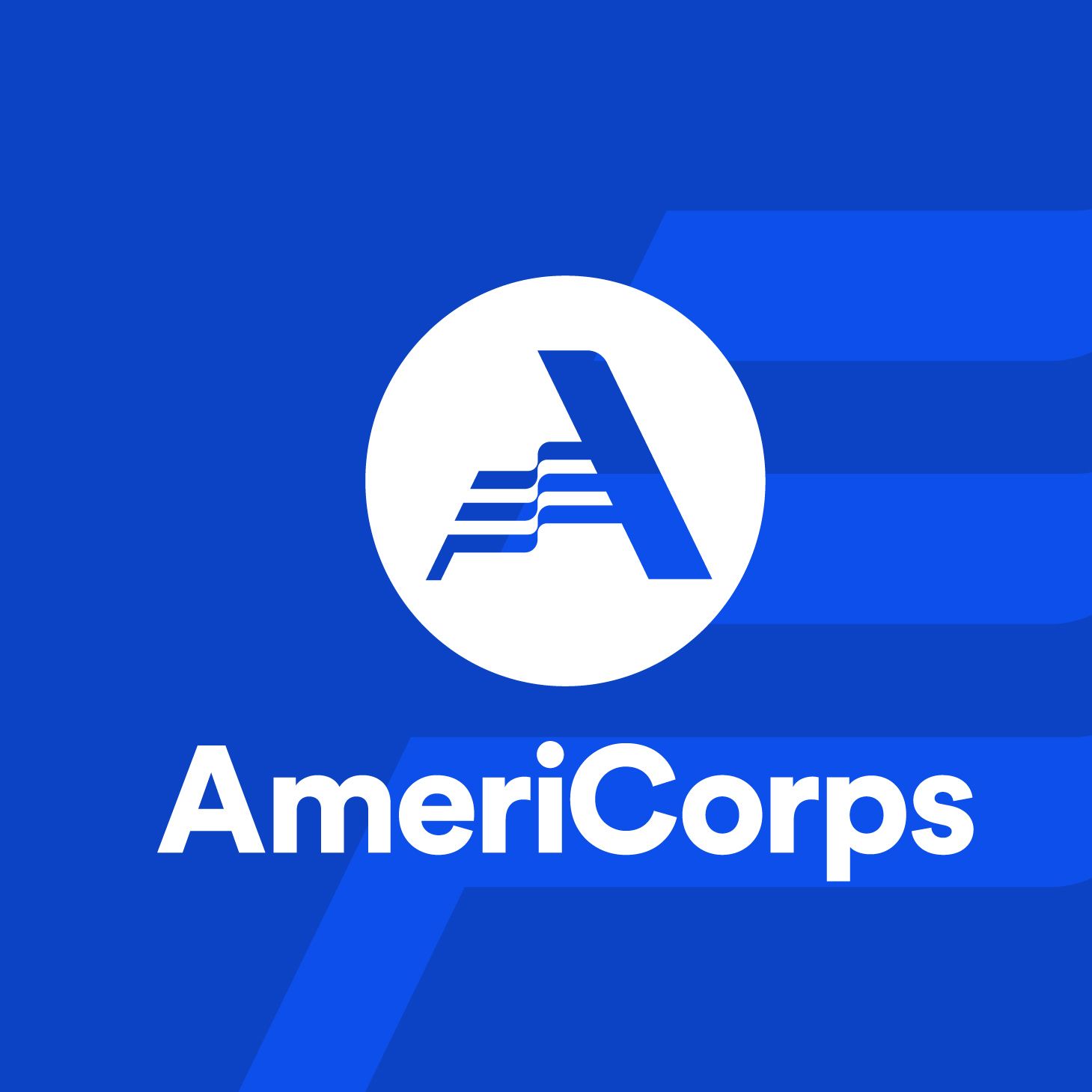Field Crews
MCC Field Crews work on conservation projects while camping together as a crew in locations throughout Montana, Wyoming, Idaho, and the Dakotas. Project work is physically demanding, and could include trail maintenance and construction, habitat restoration, mesic restoration, planting, backcountry work, forest fuels reduction, and more. Not all CLs will work on all types of projects! Field Crews are a great fit for anyone looking to get into the backcountry and for exposure to a variety of conservation work.
-
Trail Maintenance and Construction
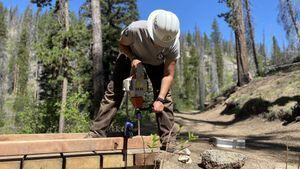
Our crews maintain the hiking, biking, stock, and ATV/Motorized trails the public loves to enjoy. The demands on our recreational infrastructure are at all time highs and the work we do is critical for the public to enjoy quality experiences on public lands. This work includes:
- Clearing trails of downed trees using crosscut saws/chainsaws
- Cleaning out drainage structures such as waterbars and drain dips to keep the trail dry and help with erosion control
- Building bridges to help transport user groups across waterways
- Building turnpikes & puncheons to raise the trail surface in wet/muddy areas
- Brushing the trail corridor
- Building retaining walls to support the trail surface in vulnerable areas
-
Habitat Restoration
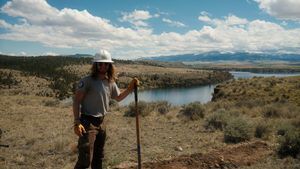
Our crews do a variety of large landscape conservation work with the goal of protecting intact ecosystems. This includes:
- Managing invasive weeds (hand pulling, applying herbicide, biological control)
- Planting trees and shrubs for erosion control and habitat improvement
- Seed collection
- Fencing - this could include replacing barbed wire with wildlife friendly fencing or removing fencing all together
- Improving Sage grouse habitat through conifer removal
-
Fuels Reduction
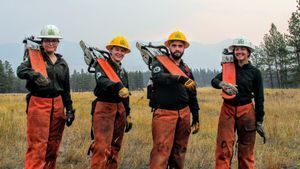
Our crews work to reduce the impact of wildland fire:
- Reducing the impact of wildland fire through reducing the amount of fuels (trees and shrubs)
- This work helps to provide resilience for communities living in or near the wildland/urban interface.
-
Backcountry Work
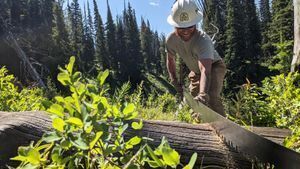
Many crews have the opportunity to work in the “backcountry,” where you are working on a site that is away from your MCC vehicle. This typically requires backpacking into the site.
This work allows participants to explore some of the wildest land in the lower 48 states. Much of this work takes place in designated Wilderness Areas, a special designation that provides an extra measure of protection to certain wild places.
Want to learn more about specific field crew projects? Check out these projects from previous years to get a sense of the great work that has been accomplished by our crews!
-
Cut and Run in the Bob Marshall Wilderness
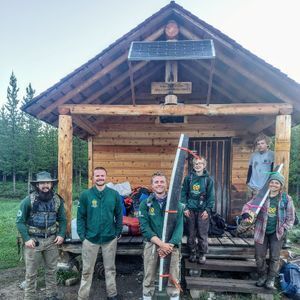
MCC crews do a lot of clearing of downed trees over the trail. We refer to these projects as "cut and run," because the crews clear as many trees as they can in a day, and move camp along the trail according to their progress. Clearing these trails is often one of the first things managers do in the early summer, and one of the most important pieces of maintenance to keep trails open for the public. Many of our field crews work in specially designate Wilderness Areas where mechanized equipment is not allowed (think chainsaws). They must use primitive crosscut saws, hand saws, and axes to clear trees off the trail. This crew spent their season working in the Bob Marshall Wilderness, a protected 1.5 million acre area south of Glacier National Park. One of the crew members, Gray, perfectly describes how the long days create shared comradery on a crew:
"We cruised down the trail, we sized up binds on the go, and we got real dirty. The hand bucking required patience, and the long days required endurance. Adversity through the hitch just seemed to breed comradery and motivation among the crew. I say this personally and I know my crew mates share the sentiment; we feel like we won the crew lottery."
Thanks for all the hard work back there!
-
Adaptive Mountain Bike Trails with the Bureau of Land Management
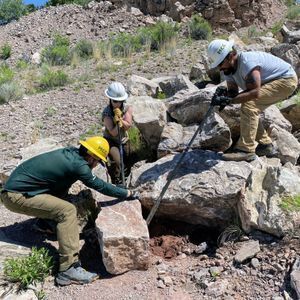
This Crew worked closely with the Bureau of Land Management to widen trails to accommodate adaptive bikes. This project allowed people with disabilities or limited mobility to be able to access the trail that previously was not wide enough for the adaptive bikes. They improved and dug new tread, and used large rocks to anchor the trail and provide stability. The crew constructed and improved a mile and a half of this trail for not only people who use adaptive bikes, but the Newcastle and mountain biking community in general. Thanks for the great work and helping to provide access for all!
-
Mud, water, and turnpikes on the Bridger Teton National Forest
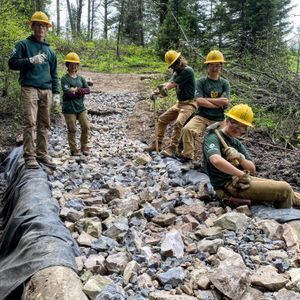
The two main goals of trail maintenance and construction are to keep dirt on the trail and to keep water off the trail. Much of the work we do on trails can be distilled down to these two concepts. This crew worked with the Bridger Teton National Forest to rehabilitate a trail that was muddy and impacted by water. The crew spent the first part of their hitch building a turnpike (the picture above), a structure that raises the surface of the trail to provide a dry walking surface, and route excess water off the trail through a culvert underneath the structure. This requires cutting trees for the structure and hauling large amounts of rock for fill. The crew also dug drains and put in water bars in an area prone to groundwater seepage. Because of their work, this trail is not only a better, drier experience for hikers and stock users, but will also increase the longevity of the trail. Thanks to the crew for their hard work!
-
ADA Trail in Glacier National Park
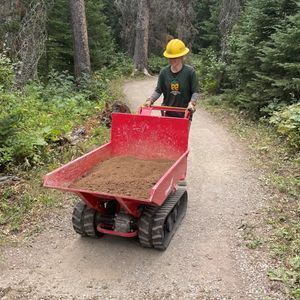
On this project, a Northern Rockies crew was working to create an American Disability Act (ADA) trail in Glacier National Park. This trail will provide more accessible hiking options in GNP for people with different disabilities. There aren't a whole lot of ADA trails within National Parks, and trails like this help provide access to a wider audience. The crew here is using “StaLok” paving material that creates a durable surface suitable for wheelchairs, but also a surface that is still natural soil, just enhanced. The soil's strength is increased and equal to that of asphalt while still retaining flexibility.
Check out this video of the process!
-
Boundary Management on the Beaverhead Deerlodge National Forest
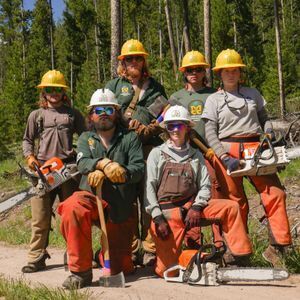
This crew worked with the Beaverhead Deerlodge National Forest to take on the task of clearing borders for the National Forest in order to establish a distinct line between the private properties and the forest. The process involves utilizing survey equipment to determine the property boundary, and then using chainsaws to clear a 6 foot corridor between private and public lands. One of the crew members described the project as challenging yet rewarding:
"Navigating through the dense trees to find the line of sight from post to post was a challenge. Creating a 3-foot clearing on either side of the line also turned out to be a little trickier than we imagined. The area we worked in looked like a game of pickup sticks for giants. Though difficult, it was satisfying to look back and see the clear lines we made."
This is another continuation of a previous years' project. Projects like these help MCC develop really strong relationships with our partners year after year!
-
Wildlife friendly fencing with the National Parks Conservation Association
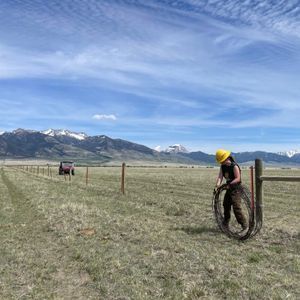
This crew was working with the National Parks Conservation Association (NPCA) to remove barbed wire fence along a wildlife corridor and replace the barbed wire with smooth wire that allows for animals to pass through more easily. The NPCA manages the Yellowstone Pronghorn Antelope connectivity program from the Yellowstone Field office, and focuses on protecting and restoring habitat and migration corridors. The goal of this specific project was to connect the Yellowstone National Park Pronghorn herd with other regional herds - essentially working to increase the genetic connectivity between pronghorn populations. The fence that was getting removed was not wildlife friendly and pronghorns were not able to roam freely in their habitat with this barrier in the way. The new fence is a suspension fence and is wildlife friendly, the bottom wire is smooth so if anything crawls under it they are far less likely to be injured. The fence also has suspension posts that allow more give and flexibility making it easier for pronghorns and other wildlife to migrate more safely and increase their chance of survival.

![[Image description: Six MCC members stand in a field, two holding large crosscut saws, and two with mattocks in their hands.]](https://cdn.firespring.com/images/c4e123e3-961b-4f85-b5e8-3b01cf413aa0.jpg)
